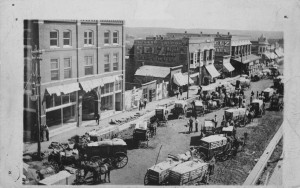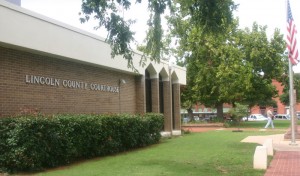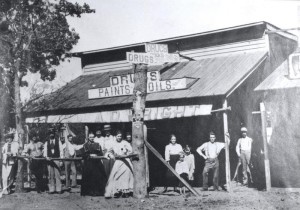About

Chandler was located on a scenic hilltop in the center of Lincoln County to serve as the county seat of government, and was established in its own land run September 28, 1891.
Surveyors weren’t finished in time for it to be included in the county race for free land six days earlier. Thus, Chandler is one of only two towns in the state to have its own land run or “rush”. Gunshots at high noon signaled a race of several thousand land seekers on foot or horseback in a mad dash for lots in the 320-acre townsite.
Chandler was never a “boom” town despite surrounding oil discoveries and abundant crops, especially cotton. Population counts within city limits have neared but never reached 3,000. Estimate for 2008 is 2,749.
The city was named for George Chandler, Kansas lawyer and assistant secretary of the U.S. Department of Interior. The main business street, First to Fifteenth, was named Manvel Avenue honoring the Santa Fe Railroad president.
A tornado destroyed or damaged most of the city and killed 17 people in March 1897. Most commercial buildings built soon after were constructed of brick and stone. Ten still house businesses and are listed in the National Register of Historic Places. Eight other homes, churches and buildings have also received the national recognition. West Eighth Street houses were known as “Silk Stocking Row”.
A three-story brick and stone courthouse of classical architecture, built in 1907, was razed after a fire in 1967. It was replaced with the present one-story structure.

International tourist interest in historic U.S. Route 66, “Main Street of America”, has increased travel to Chandler and the Chandler Rt.66 Interpretive Center in the historic National Guard native stone armory.
The city served as state training headquarters in the first years of the Oklahoma National Guard thanks to work of General Roy Hoffman, and continues to serve as headquarters, 160th Field Artillery. Remnants of early campground structures are still visible.
Chandler was hometown of the state’s fourth governor, attorney J.B.A. Robertson and U.S. Marshal William Matthew “Bill” Tilghman. Homesites of Governor Roy Turner and classical music composer Roy Harris are near.
The city was named “Pecan Capital of the World” in 1949 by the state legislature in view of production and processing of the locally grown nuts. Chandler Baseball Camp, launched in 1958, became America’s largest baseball athletic camp for boys.
 Pioneer movie photographer Benny Kent’s films of early state and local events can be viewed at the downtown Lincoln County Historical Society Museum of Pioneer History. It houses a large collection of county artifacts, photographs, a teacher’s legacy of marionette theater and soon, the Oklahoma Law Enforcement Hall of Fame and Museum.
Pioneer movie photographer Benny Kent’s films of early state and local events can be viewed at the downtown Lincoln County Historical Society Museum of Pioneer History. It houses a large collection of county artifacts, photographs, a teacher’s legacy of marionette theater and soon, the Oklahoma Law Enforcement Hall of Fame and Museum.
Parks, lakes, golf course, walking trails, swimming pool, library and community theater are additional sites and sights that provide quality of life for citizens and visitors.

